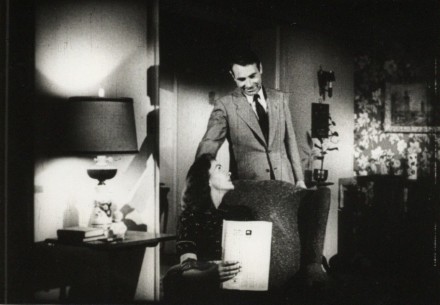
passage a l'acte
Stills
About
Given context: a Hollywood text from the early sixties; a family breakfast with husband, wife, son and daughter. Inscribed: a re-petition of what is diminished, set apart and alien; a symptom. Four people at the breakfast table, an American family, locked in the beat of the cutting table. The short, pulsating sequence at the family table shows, in its original state, a classic, deceptive harmony. Arnold deconstructs this scenario of normality by destroying its original continuity. It catches on the tinny sounds and bizarre body movements of the subjects, which, in reaction, become snagged on the continuity. The message, which lies deep under the surface of the family idyll, suppressed or lost, is exposed – that message is war. "The first shock, the first flight, the fear at the beginning of the film: The son jumps up from the table and throws open the door, which sticks in an Arnoldian loop of hard, hammering rhythm. He is compelled to return to the table by a mechanically repeated paternal order, 'Sit down.' And at the end, when the two children spring up, finally released from their bondage, Arnold is again caught at the door; at the infernally hammering door, as if it were completely senseless to try to leave here – this location of childhood and two-faced cinema." – Stefan Grissemann



